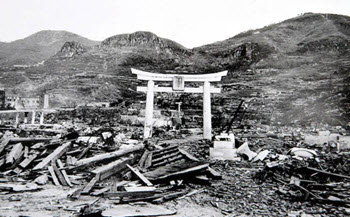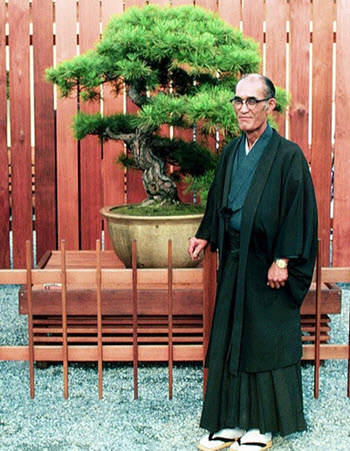Contents
Prelude
By the year 1940, Europe was already embroiled in war, but the Asia-Pacific War would not start until December 1941. In 1940, the bonsai business in Japan was doing well, and the oceans were still open to allow for export. At this point, there were approximately 300 bonsai dealers in Tokyo, and Japan was also exporting a fair amount of bonsai specimens abroad, particularly to North America. A wide range of trees were used for bonsai in Japan, up towards 150 different species.
This was also a period when first- and second generation Japanese immigrants to the United States were starting bonsai nurseries and clubs, especially along the U.S west coast.
A very important English-language bonsai book was published in Tokyo: “Dwarf Trees (Bonsai)” by Shinobu Nozaik (1895-1968).
Bonsai in the time of war
 Naturally, the war time horrors meant that less resources could be devoted to the maintenance of bonsai plants. During the Asia-Pacific War, which was a part of World War II, the Imperial bonsai collection was preserved by Kyūzō Murata (1902–1991), who also collected plants from other bonsai growers to keep them protected and cared for.
Naturally, the war time horrors meant that less resources could be devoted to the maintenance of bonsai plants. During the Asia-Pacific War, which was a part of World War II, the Imperial bonsai collection was preserved by Kyūzō Murata (1902–1991), who also collected plants from other bonsai growers to keep them protected and cared for.
When Japan was air bombed in the spring and summer of 1945, many trees were killed, including bonsai trees. The night between March 9 and 10 was especially bad, as over 40 square kilometers of Tokyo were destroyed by the U.S. Army Air Forces.
On the night between May 25 and 26, the Imperial Palace caught fire during a bomb raid, but brave gardeners managed to save the Imperial tree collection by pouring water over the trees.
After the war
After the end of World War II, Japan was gradually rebuilt, and this included the evaluation and – if possible – restoration of damaged bonsai trees.
Many of the people who had worked in the bonsai sector before the war did not return to it afterwards. This included many of the Omiya growers.
Many of the traditional tree species and varieties were quite difficult to obtain for the bonsai keepers after the war, a shortage which had an impact on the art since new alternative routes had to be explored.
Allied Occupation of Japan help spread the knowledge of bonsai
During Allied Occupation of Japan, which continued through 1952, many U.S. officers were stationed in Japan together with their families. To spend their time, it was common among military wives to take courses in traditional arts and crafts, including bonsai and bonkei. These courses, which were arranged by the U.S. military, helped spread the knowledge of bonsai to North America.
 Yuji Yoshimura
Yuji Yoshimura
In 1952, Yuji Yoshimura – the son of a Japanese bonsai master – collaborated with the German diplomat, author and bonsai aficionado Alfred Koehn to arrange bonsai demonstrations in Tokyo that would be open to the public and accessible even for foreigners.
The first course was held at Yoshimura’s Kofu-en nursery in April 1952 and became an instant success. Within three years, he had taught over 600 students – mostly foreign diplomats, military personal and accompanying wives.
Each course consisted of six lessons, and Yoshimura made the information more accessible by systematizing it; he did for instance groupe the various stylings of bonsai trees into five primary categories, something which had not been done before.
Born in Tokyo in 1921, Yoshimura was the second son of the illustrious bonsai and suiseki master Toshiji Yoshimura. Toshiji (1891-1975), and the grandson of a samurai who had also been a renowned garden designer. Yoshimura refused to believe in the then prevailing idea that people from other parts of the world, such Europe and North America, could neither appreciate nor technically master bonsai. Yoshimura would go on to become an extremely important link between Japanese bonsai art and the rest of the world.
Exhibitions
After the war, the number of bonsai exhibitions grew, which helped promote the art and also made it more accessible to foreigners in Japan, thus boosting the spread of bonsai outside Japan. The annual Kokufu-ten bonsai display was revived again as early as 1947, after having been absent for four years.